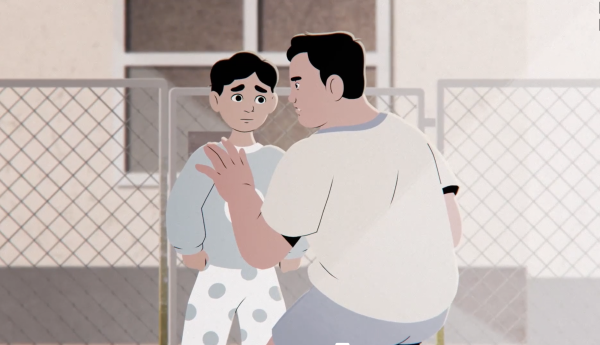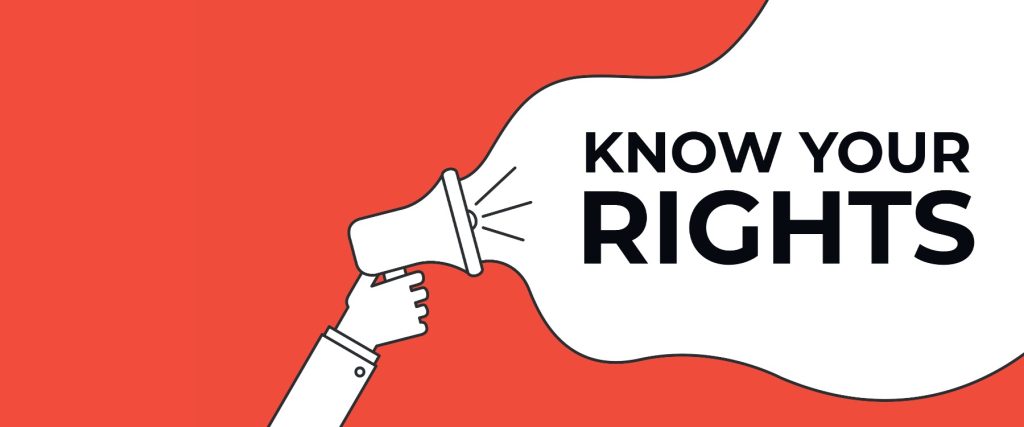These days, knowing one’s rights and what supports might be available can be life-changing or even life-saving. As an organization, getting facts and actionable steps out to your community is imperative
Even more imperative? Getting that information out in a way people can understand and remember.
 The team behind WeHaveRights.us has achieved this brilliantly. In 2018, the ACLU and Brooklyn Defender Services released a series of four videos created in collaboration with MediaTank Productions and a fifth in 2020. The series is meant to inform people of their rights when interacting with Immigration & Custom Enforcement agents (ICE). Each video shares dos and don’ts: Be prepared for encounters. Do not show any documents. Document arrests. And, each guideline is embedded within a personal story.
The team behind WeHaveRights.us has achieved this brilliantly. In 2018, the ACLU and Brooklyn Defender Services released a series of four videos created in collaboration with MediaTank Productions and a fifth in 2020. The series is meant to inform people of their rights when interacting with Immigration & Custom Enforcement agents (ICE). Each video shares dos and don’ts: Be prepared for encounters. Do not show any documents. Document arrests. And, each guideline is embedded within a personal story.
Take a moment to watch the videos (they are each just a few minutes long), and you will see how the narrative moments give the instructions clarity and a sense of urgency.
Michael Kleinman, the founder of MediaTank Productions, co-wrote and co-directed the episodes. Kleinman told us about the inspiring success of the campaign.
“The videos have been viewed tens of millions of times since their release. Notably, millions of views have come in 2025, nearly 7 years after the initial launch, proving their durability as a tool for information. The videos benefited from partnerships with major media outlets and hundreds of nonprofit partners who participated in the campaign as well as celebrities who lent their voices and platforms to the project, including Jesse Williams, Kumail Nanjiani, Diane Guerrero and Fiona Apple.”
 What made these episodes resonate so much with viewers? Their use of story. Michael told us, “We decided to couch the vital information we were providing to viewers in human stories for several reasons – the dramatic narrative structure made the videos more engaging, which allowed for a wider reach and greater shareability while also making it easier for the viewer to retain information. Because the stories we used were all based on real world examples of encounters with ICE, they also provided viewers an emotional window into what is happening in communities across the country. In creating the stories, we worked closely with immigration lawyers and undocumented communities to ensure the storylines were accurate and that they connected with our target audiences.”
What made these episodes resonate so much with viewers? Their use of story. Michael told us, “We decided to couch the vital information we were providing to viewers in human stories for several reasons – the dramatic narrative structure made the videos more engaging, which allowed for a wider reach and greater shareability while also making it easier for the viewer to retain information. Because the stories we used were all based on real world examples of encounters with ICE, they also provided viewers an emotional window into what is happening in communities across the country. In creating the stories, we worked closely with immigration lawyers and undocumented communities to ensure the storylines were accurate and that they connected with our target audiences.”
Whether sharing information about funding losses, language changes your communities might need to know for grant forms, or how to participate in your programs, don’t leave stories at the door.
When you have instructions to share with your partners, clients, and communities, connect information to real human experiences. Stories are a doorway to engaged learning.

